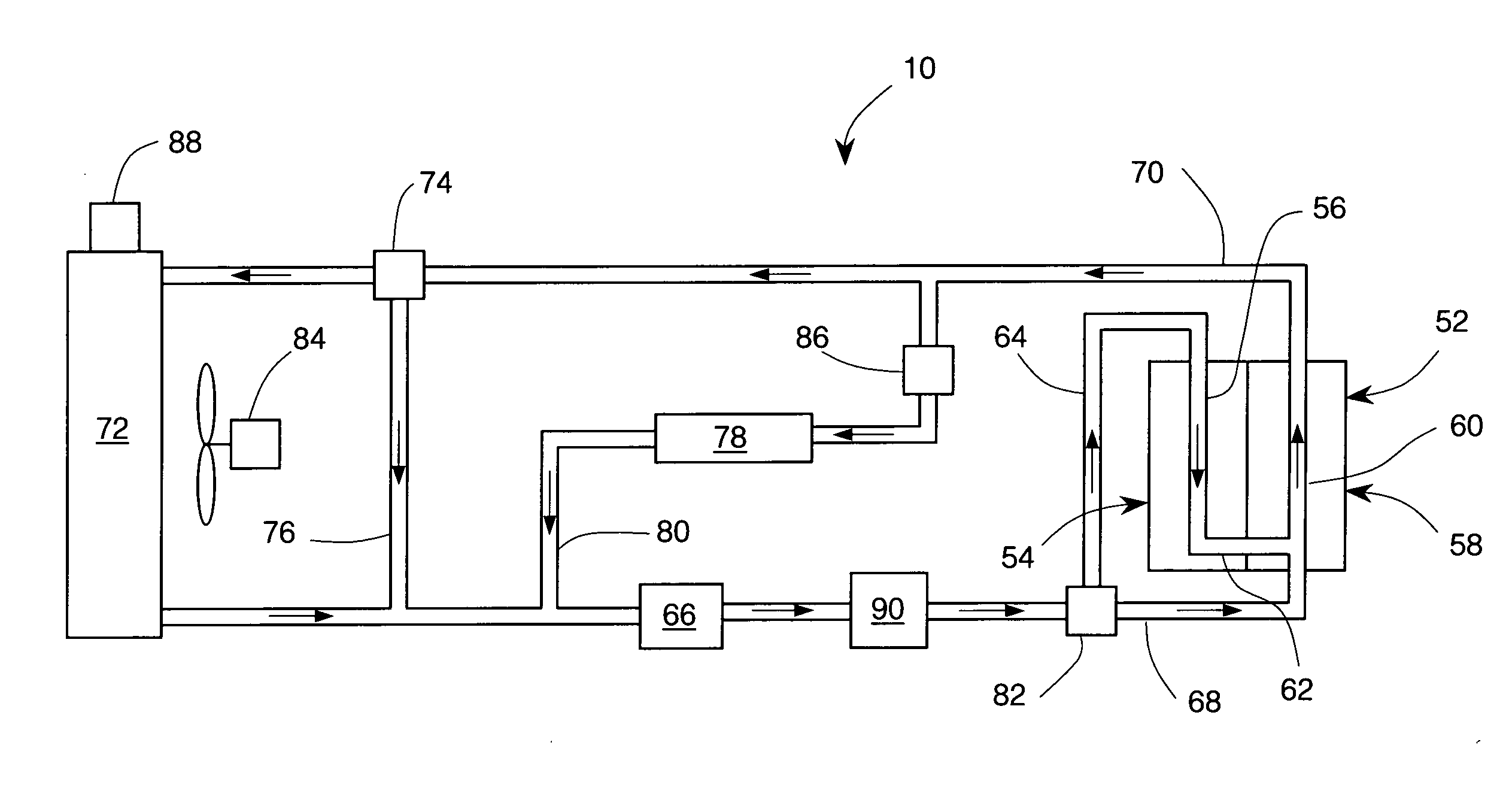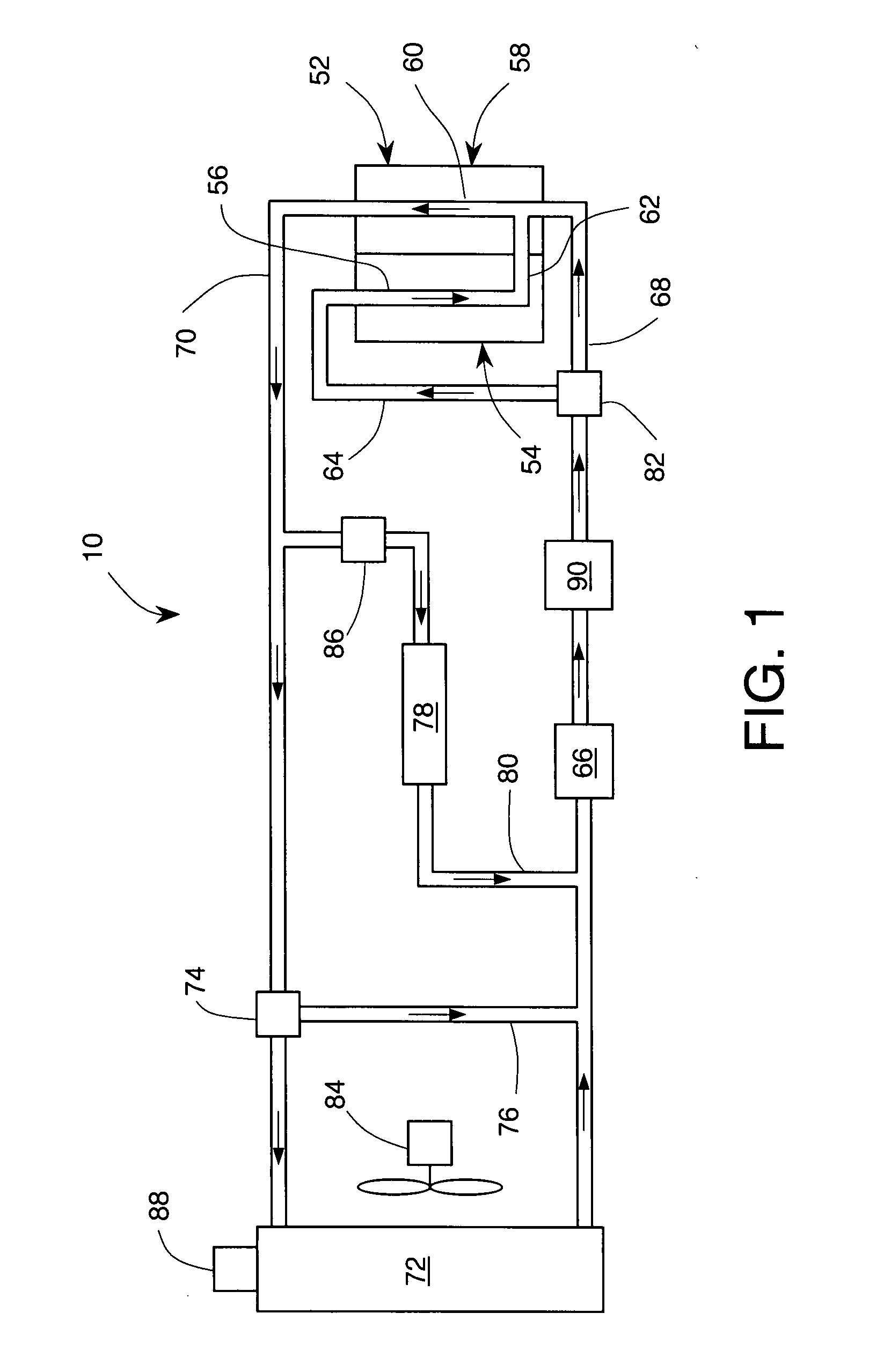Engine cooling system with overload handling capability
a technology of engine cooling and overload handling, applied in the direction of engine cooling apparatus, liquid cooling, machines/engines, etc., to achieve the effect of facilitating the downsizing of automotive engines without restricting peak performance, simple, compact and lightweigh
- Summary
- Abstract
- Description
- Claims
- Application Information
AI Technical Summary
Benefits of technology
Problems solved by technology
Method used
Image
Examples
example 1
[0035]Consider a hypothetical ICE having a liquid coolant system 10 such as shown in FIG. 1. During operation at normal ICE load the waste heat load from the engine 52 is rejected by the radiator 72 into ambient air. The temperature of the coolant in the system is generally stable and near the normal operating temperature T0. Assume that the demand for ICE output power is increased so that the waste heat load from engine 52 deposited into the liquid coolant exceeds the capacity of radiator 72 to transfer heat to ambient air by 10 kilowatts (kW). In response to such “overload” condition, the coolant temperature may rise to the point when the PCM in the heat accumulator 90 begins to melt, thereby removing heat from the coolant. Assume additionally that after 60 seconds, the demand for ICE output power is returned back to its previous normal condition. The amount of heat deposited in the PCM during the 60 seconds of overload would be about 600 kilojoules (kJ). If the PCM is erythriol (...
PUM
 Login to View More
Login to View More Abstract
Description
Claims
Application Information
 Login to View More
Login to View More - R&D
- Intellectual Property
- Life Sciences
- Materials
- Tech Scout
- Unparalleled Data Quality
- Higher Quality Content
- 60% Fewer Hallucinations
Browse by: Latest US Patents, China's latest patents, Technical Efficacy Thesaurus, Application Domain, Technology Topic, Popular Technical Reports.
© 2025 PatSnap. All rights reserved.Legal|Privacy policy|Modern Slavery Act Transparency Statement|Sitemap|About US| Contact US: help@patsnap.com



